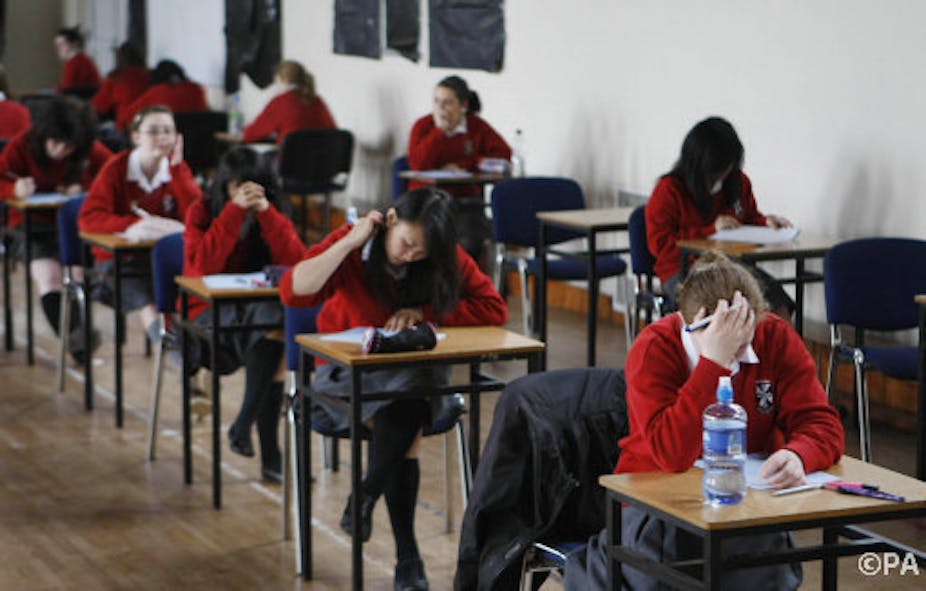While the proportion of students from more deprived families and neighbourhoods who go to university has been increasing in recent years, those from poorer backgrounds are still far less likely to go to university than those from richer backgrounds.
In a new research project funded by the Department for Education, I investigated the role of schools in helping to explain who goes to university and how well they do once they are there. I compared higher education participation rates and degree outcomes amongst pupils who attended different secondary schools, and explored the factors that help to explain these differences.
My findings highlight the importance of attainment at GCSE level, not just A-level, in explaining higher education participation decisions and degree outcomes. Schools can contribute to higher university entry and performance by helping students make the right choices about the subjects and qualifications they take at GCSE level, and by ensuring that they achieve the best possible grades.
They also suggest that among similar students with similar GCSE and A level results, those from less effective state schools may have higher “potential” than those from private, selective or more effective state schools, as they seem to perform significantly better once at university. This may be something that universities want to be aware of in making entry offers.
The gap
My research uses administrative data on all pupils in England. This data provides information on where pupils go to school, as well as their GCSE and A-level results. If they go to university, it also shows which institution they attend, whether they complete their degree, and which degree class they receive.
Compared to students who attend less effective state schools, those who attend private, selective and more effective state schools are substantially more likely to go to university, especially to “high-status” institutions – meaning those in the Russell Group, plus those with comparably high research quality. These students are also less likely to drop out, more likely to complete their degree, and more likely to be awarded a higher degree class.
But the fact that different types of pupils attend different types of schools is crucial for understanding these differences. Students from less effective state schools are more likely to come from disadvantaged neighbourhoods, more likely to have special educational needs, and have lower attainment, on average, than students from other types of schools.
In particular, they are much less likely to achieve good grades in the qualifications and subjects that are highly regarded by universities.
Flip and reverse
For example, I found that while 91% of pupils at selective independent schools achieve at least five A* to C grades at GCSE, including English and maths, only 39% of pupils at non-selective community schools do the same.
The differences come into even sharper relief once we focus on subjects that form part of the English baccalaureate (EBacc): maths, English, science, history and/or geography, and languages. While 86% of pupils at selective independent schools achieve at least 5 A* to C grades in EBacc subjects, just 28% of students from non-selective community schools do the same.
These gaps are important. They are a key part of the reason why students from private, selective and more effective state schools are more likely to go to university – and do better once they are there – than pupils from less effective state schools.
When we compare students from similar backgrounds with the same grades in the same qualifications and subjects at the end of secondary school, the differences in participation virtually disappear: there is no longer any difference in how likely you are to go to university on the basis of the type of school you attend.
The impact of comparing like with like is even starker when we look at university outcomes. When we compare pupils from similar backgrounds with the same GCSE (and A-level) attainment, the association between secondary school characteristics and university outcomes is reversed: pupils from private, selective and more effective state schools are more likely to drop out, less likely to complete their degree, and less likely to be awarded a first or a 2:1 than similar pupils with similar attainment from less effective state schools.
For example, pupils from selective independent schools are 2.6 percentage points more likely to drop out, 6.4 percentage points less likely to complete their degree, and 10.3 percentage points less likely to graduate with a first or a 2:1 than similar pupils with similar attainment from non-selective community schools. This remains true even for comparisons of pupils from different schools who attend the same universities and study the same subjects.
Results matter
Moreover, GCSE attainment remains significantly associated with higher education participation and outcomes, even after accounting for A-level scores.
For example, every additional GCSE in an EBacc subject at grade A* is associated with a 2 percentage point increase in the likelihood of going to university and a 0.5-1 percentage point increase in the probability of attending a high-status institution. It is also associated with a 2 percentage point reduction in the likelihood of dropping out, and a 3 percentage point increase in the probability of graduating with a first or a 2:1.
These results suggest that “widening participation” efforts should focus on ensuring that pupils from all schools make the right choices over the subjects and qualifications they take at the end of secondary school, and that they maximise their chances of getting good grades at this level.
But they also raise the possibility that universities may wish to take into account the type of school a student attended when making them an offer. Among similar students with similar GCSE and A level results, my results suggest that those from less effective state schools perform significantly better at university.
While recognising that this is true on average, and not for every student, it is certainly something that universities should be aware of when setting entry requirements.

